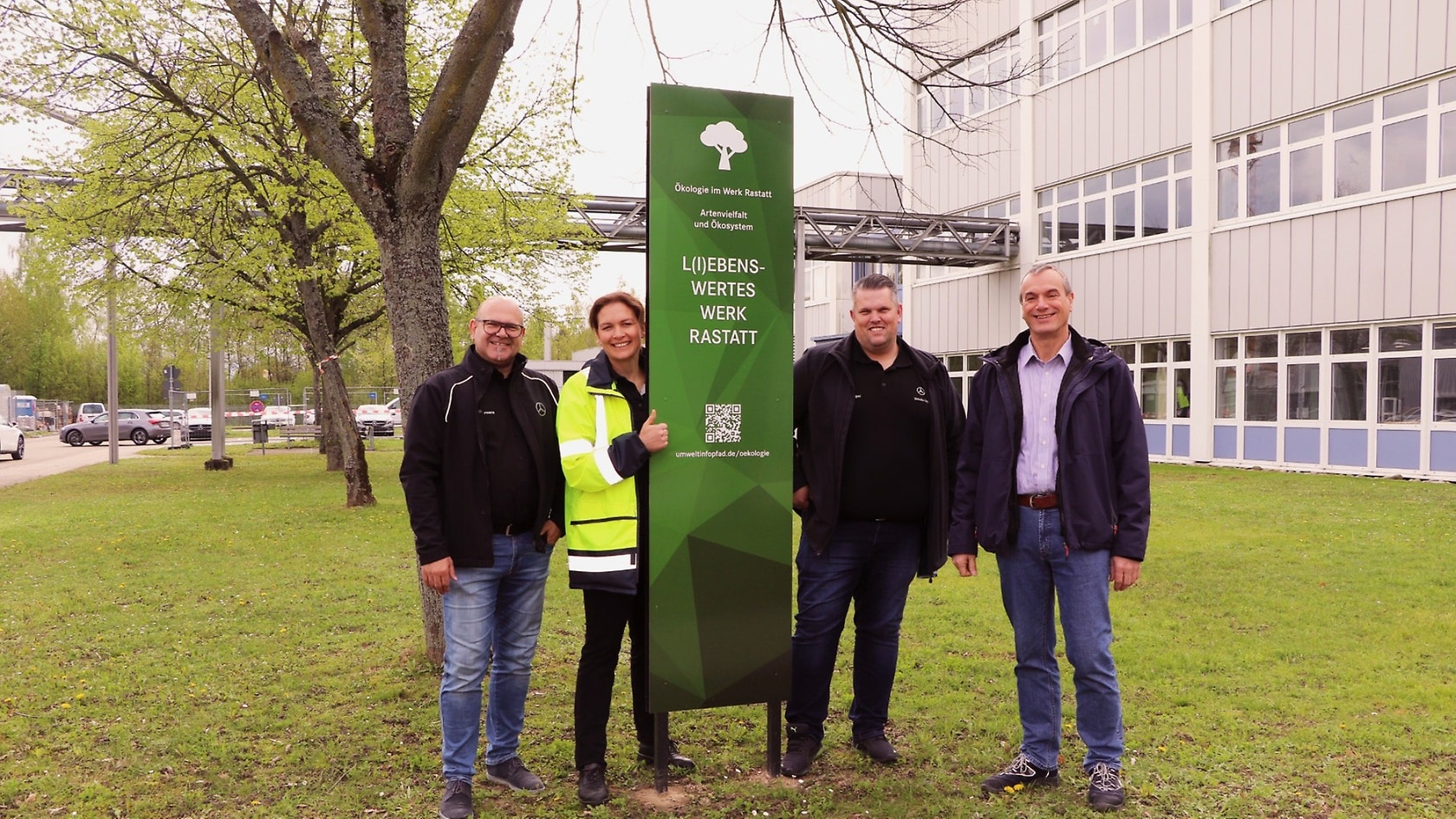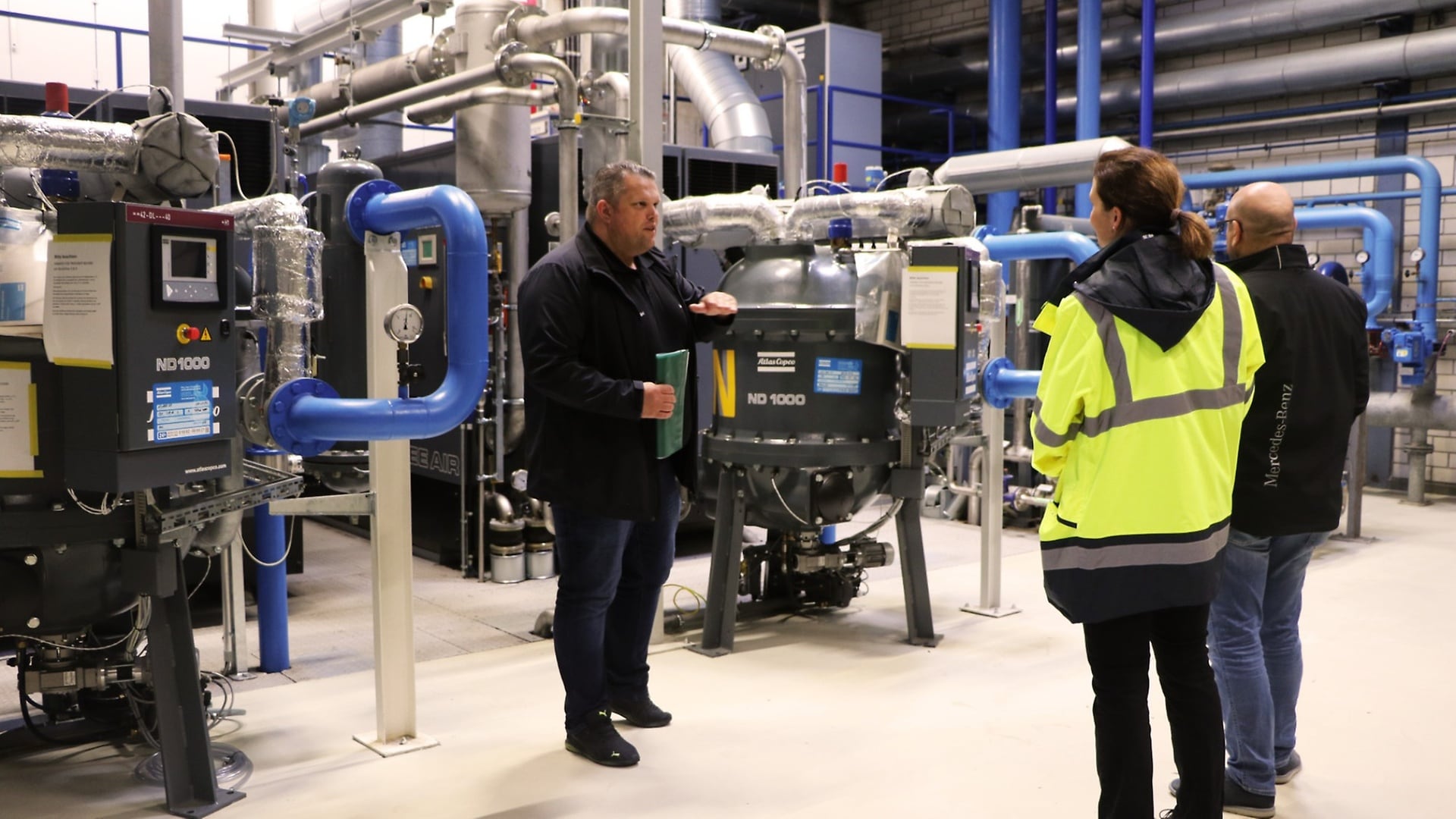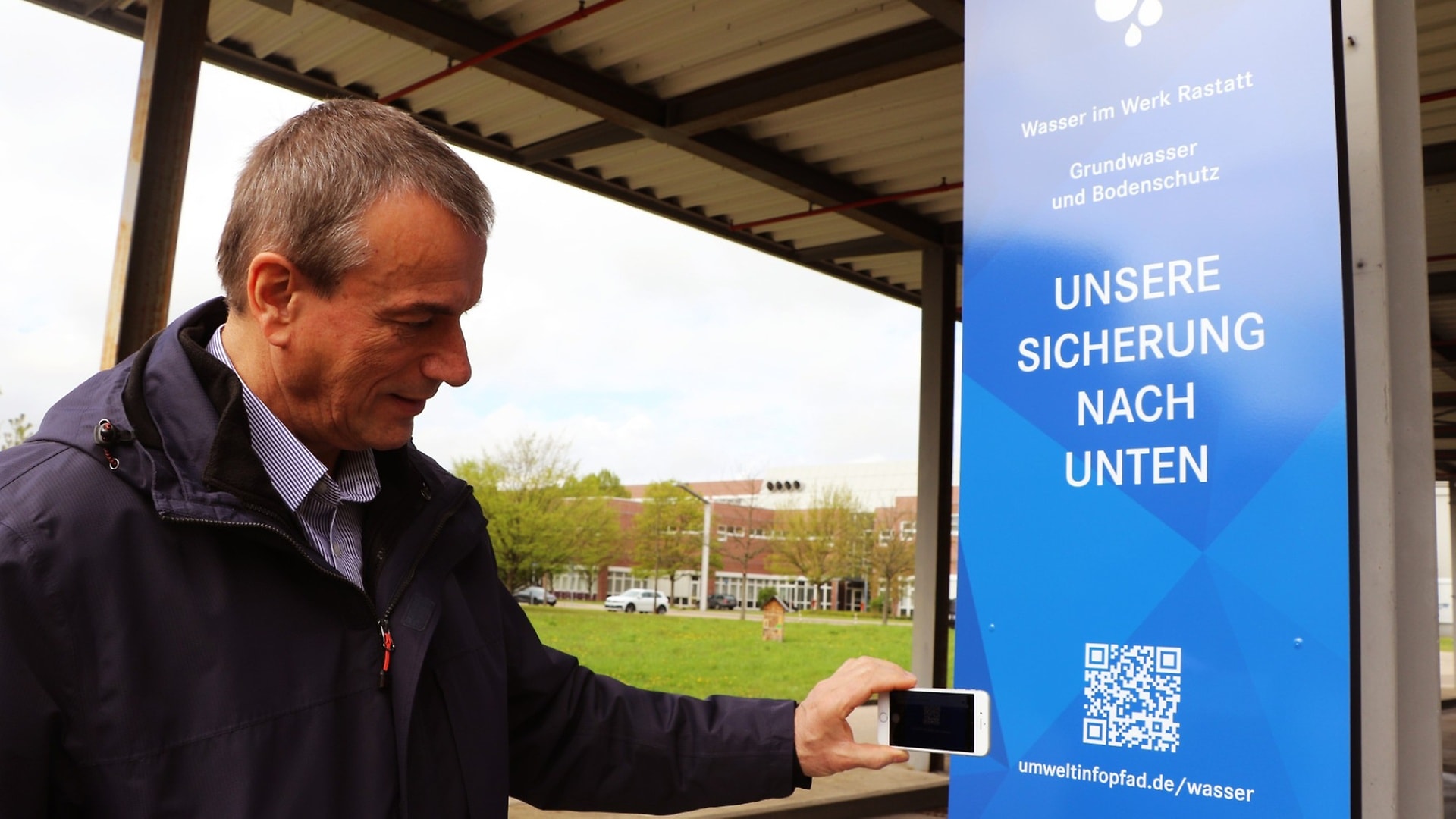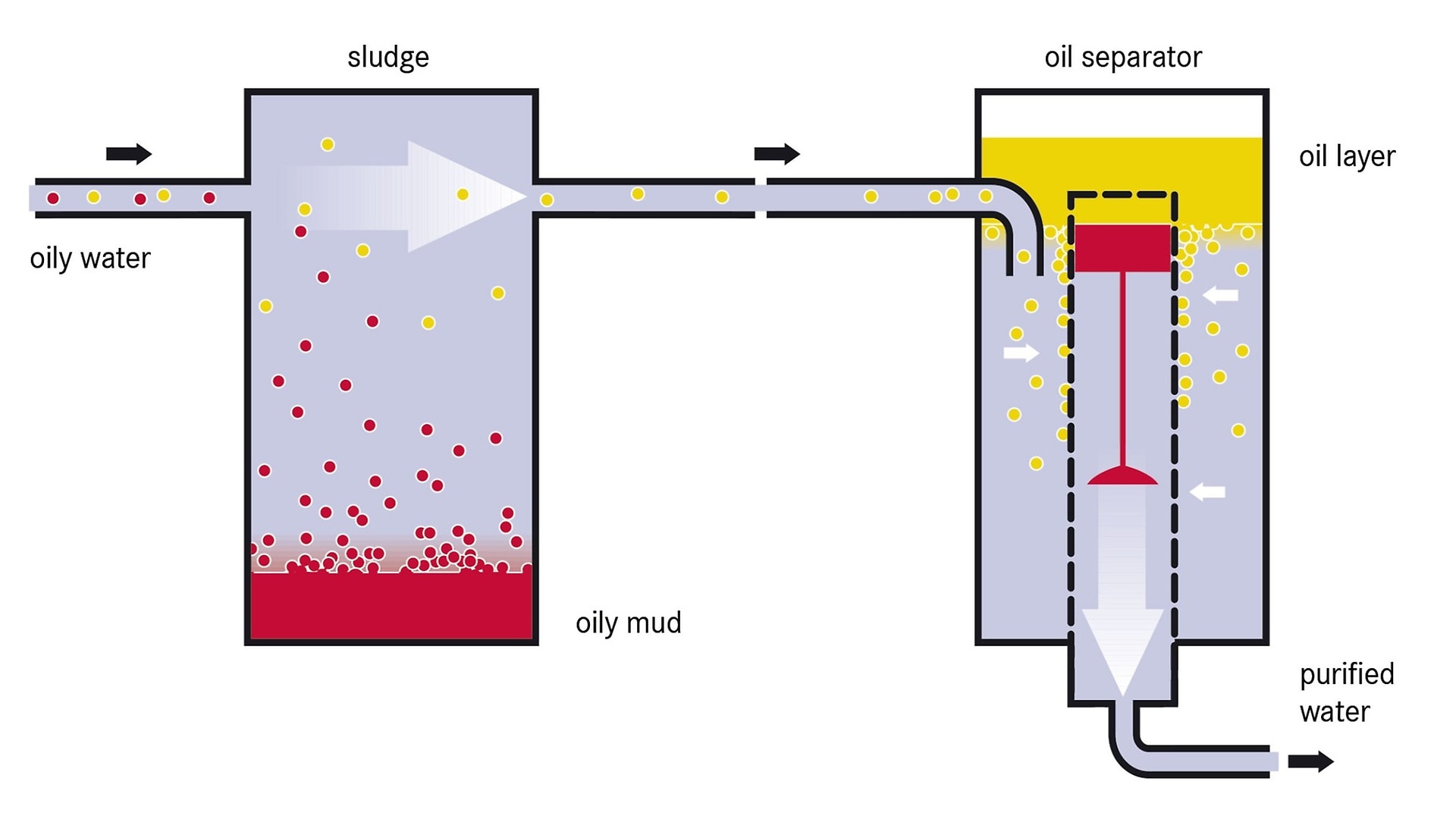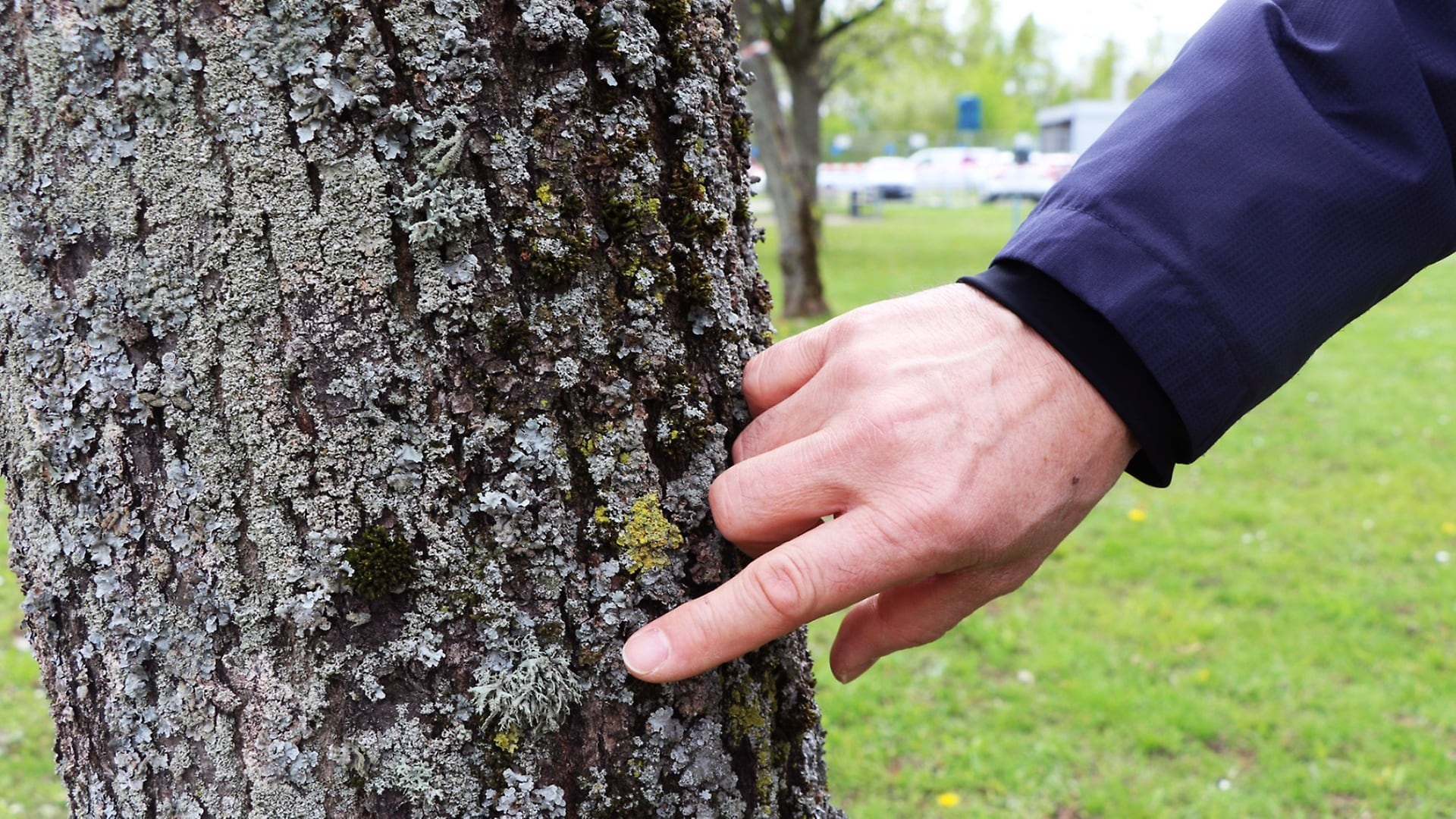With the "Ambition 2039" initiative, Mercedes-Benz describes the road to sustainable mobility along the entire value chain. A new energy and environment info path at the Mercedes-Benz Rastatt Plant demonstrates that green production already starts at the factory level.
Pipes run through the energy center of the Mercedes-Benz Rastatt Plant like giant supply arteries. They snake into the neighboring buildings, feed production equipment with heat, cold, power and pressurized air. “Everything we do here involves two major levers: producing energy efficiently and reducing energy consumption," explains Heiko Engel, who is part of the plant's energy team. Using technologies such as cogeneration, rotary heat exchangers or heat recovery, he and his colleagues improve the efficiency figures each year anew. Every decimal place is a success.
The results of these methods give the energy team a tailwind. Since 2011, the location was able to cut the specific CO₂ emissions per vehicle in production by nearly half, as Heiko Engel emphasizes. The next major project is already on the drawing board: By 2022, the electricity in Rastatt, as in the other European Mercedes-Benz plants, is to come from renewable sources such as wind, solar and hydropower. It is one of the milestones of the initiative, with "Ambition2039"which Mercedes-Benz is pushing ahead the transformation to emission-free mobility. This includes the conservation of resources and a comprehensive CO₂ reduction, beginning with the raw materials and the supply chain and ending with the production, the service life and recycling concepts.
Traveling digitally on the environmental info path
The process towards a sustainable production comprises numerous measures. The example of the Mercedes-Benz Rastatt Plant demonstrates what this can look like in concrete terms. Heiko Engel and a team of environmental experts provide transparency on all measures they get off the ground there with an energy and environment info path. What’s special: employees and visitors can walk the path through the plant on foot and also virtually on the project website – and thus sharpen their environmental awareness on several experience levels.
How does this work? Seven steles, each about an environmental or energy topic, are set up at the location. A large QR code is printed directly below the title. "Just hold up the cellphone, scan and load the page via the QR code," explains Heiko Engel, who devised the path program together with colleagues from environmental protection management. Graphics, photos and texts then provide the user with insights that are usually not readily accessible.
Sustainable production is being advanced at Mercedes-Benz since 2012
In addition to Heiko Engel, Ralf Clemens is also one of the experts of the energy and environment info path. He leads the energy team in Rastatt and furthermore is responsible for the energy management of the car body plants Bremen, Sindelfingen and Kecskemét, Hungary.
"Sustainable production or green production is not an invention of the present. We have been pursuing the project across all production sites already since 2012. This means, we search for and find potentials for improvement, in particular in the area of energy, CO₂ reduction, water and waste, and we tackle them,"
Planners and operators at all locations identify projects and implement the measures throughout Europe. In practice, the construction of the new “Factory 56”at the Mercedes-Benz Sindelfingen Plant is a showcase project. That is because the new factory will already be carbon-neutral when it starts operation and will be supplied completely with green electricity. In addition, a photovoltaic system on the roof will provide self-produced electricity for the building.
Other Mercedes-Benz plants are already realizing high-efficiency energy concepts as well, such as Rastatt in the new body shell building. It uses a dual-purpose heat pump for heating and cooling as well as optimized ventilation systems. The effect: zero percent fossil fuels for heating the building.
Minor and major measures – everything helps to achieve the goal
Back on the energy and environment path, it becomes clear that sustainable production is an interplay of many major and minor elements. Heiko Engel cites the example of using ammonia in one of the vapor-compression refrigeration systems, which we are walking past just then. "It is one of the best natural refrigerants, because it does not harm the ozone layer," he explains. A quick look at the website tells us that the energy-efficient cooling system running on ammonia also saves 1,300 metric tons in CO₂ emissions. And even losses can still be used, for example, for generating compressed air. The powerful compressors actually are not very effective at 20 percent efficiency. The energy team switched the compressors to high-temperature cooling, which increases the coolant temperature to up to 78 degrees Celsius. Buildings such as the Customer Center, for example, are heated with this usable ‘waste heat”.
Environmental protection in practice
Sustainable production also comprises the sensible use of water, wastewater and solid waste. The environmental protection team in Rastatt headed by Verena Mecke and Heiko Kärst has also compiled numerous practical examples related to these topics for the environment info path. "My wish is to get colleagues and visitors enthusiastic about the protection of the environment," says Verena Mecke. The head of Occupational Safety and Environmental Protection Management is preaching to the choir in this regard, because more and more colleagues and customers are interested in sustainability issues. They benefit from the interplay of guided factory tour and the website and in addition get plenty of tips on the mindful use of natural resources.
For example, the use of water. "We clarify this is the title of the blue stele next to the car wash. That is were a lot of wastewater is generated, which may contain oil and pollutants. "This water has to be pretreated before we put it back into the water cycle”, explains environmental expert Heiko Kärst. We can't see this process, but it’s shown to us in graphic on the website: The heavy components of the wastewater sink to the bottom of a large tank, the light ones float on top. Assisted by a separator, they slowly fuse into a compact sludge, which is disposed on a regular basis.
The separation of oil and water
This separator principle is also used in the rainwater sedimentation basins, into which the water flows from the factory roads, parking spaces and roofs. The dirty component with the settled sediments from the road goes to the municipal treatment plant and the uncontaminated rainwater flows into the Ried Canal, which runs in a former old bed of the Rhine River. Heiko Kärst says that every individual can do his or her part, for example, wash the private car in car washes with wastewater pretreatment and of course: save water!
Soil protection – downward security
To protect the Rastatt groundwater from dangerous substances, an area the size of a small soccer pitch in the plant is fitted with a protection system. The "downward security" is especially important, because the distance to the groundwater here is just 3.5 meters, explains Heiko Kärst. We are standing at the tank farm on the so-called unloading cup, which looks more like a wide tub. If something went wrong while unloading a tanker truck, the gasoline would be caught in the tub measuring ten cubic meters rather than seeping into the ground – thanks to a multi-layered special coating.
Ecosystem assessment or what lichens say about the air quality
Be it minor or major measures – the path offers continuously updated information about it all. It is even nicer to study the condition of the Rastatt ecosystem on a real tree. "The tree we are standing in front of right now was planted during the construction of the location in early 1992 and grew with the plant”, explains Heiko Kärst. The moss-like lichens on its trunk are long-term bioindicators for the air quality in the plant. Assessments with external research partners found the lichens to be in good condition, which indicates that the emissions on the plant premises can be classified as "low" and "harmless”.
Continuously using new processes, methods and technologies for environmental protection at Mercedes-Benz makes sense – and takes the company forward. In Rastatt and in the other Mercedes-Benz plants. Apart from the certification of the energy management as per ISO 50001 and the environmental management as per ISO 14001, Rastatt like the other car plants voluntarily participates in the eco audit system (EMAS) and is certified annually by an external auditor.
"We don't operate in isolation from the rest of the world. We want to be a good employer and neighbor in Rastatt as an industrial company”, says Verena Mecke. "Our website and our environment info path provide information on what we are doing and how. With this, we want to convey that economy and ecology do not have to be mutually exclusive. But also that we have an awareness – one that we want to sharpen further – for how much we can personally contribute to energy efficiency and eco-friendly behavior. Both on the large scale of a car factory as well as at home."
